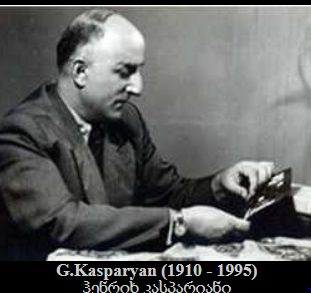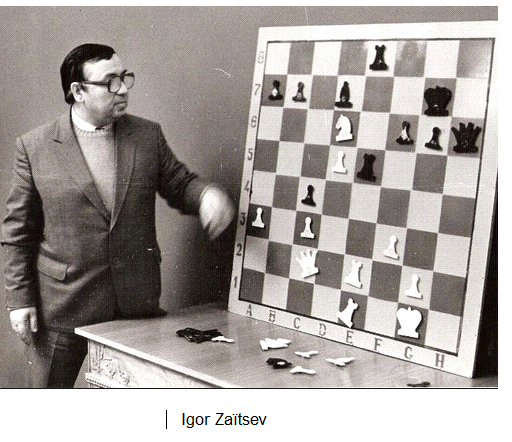Three helpmates that are a little easier than the previous series. The first one belongs to a dinosauric era where there were no twins and no 2nd solution.
The first 3# can be found very quickly or, on the contrary, can make you tear your hair out. In the 2nd, should we allow the grand-roque? The 3rd has a clear flaw, yet the theme is worth it... Strategy in the 4th. The 5th has something in common with the 6th and last, to which the remark in ... the first.
Two very different 4#s, almost 60 years apart. So are the 5#'s, but they are a full century apart. On the subject of the remarkable Ukrainian problem, some judges criticised the "lack of variety in the 3rd move", obviously imposed by the theme! The proof that one can judge chess problems with a very low IQ... The 9# is perhaps, curiously, the simplest of the series. Finally, a nice selfmate, but this time, considering its brevity, I don't let the solution drag. Which is not to say that it is trivial, far from it.
Becker and Akobia's new opus is much simpler than usual. It is surprising that this ZZ with bishop and doubled rook-pawns against bishop has never been illustrated before. But yes, there is still a lot to do in the endgame, without drifting towards the undrinkable...

Kasparian doesn't always do complicated. This cute study was presented in a solutions competition recently in India, where a mini-match called "world championship" took place. No one is calling for them to play 48 games like in 1984, but still...
The right time for the Queen exchange (as a sacrifice): pretending to fall into a trap.
An error of analysis of a master fide who became a boss of the federation reminds us of the principle of change of function. See in the same genre, but more refined, the exercise 703 of a certain book.


A great champion had throughout his career a handyman, a brilliant analyst. Here we see that he is also capable of playing well. The game won an "undeserved" beauty prize according to a columnist in 1970. Yet Black could only draw on the better defence. The design seems to be beyond both the said columnist and... the capabilities of 21st century analysis engines.
See you, God willing, in a fortnight' time, on Tuesday 28 January. Before that, welcome to the resolution contest on Sunday 26th, in the same premises.
Have a good time.
Complement to the course of 14 January.
The exercise from Komarov-Verat was unusually simple. But it was to check the knowledge of the audience: it is especially in the endings of Bishops of different colours that this "change of function" occurs. I have mentioned exercise 703, but here is a practical example, which gives me the opportunity of a deserved tribute.
The Igor Zaïtsev-Ivkov game was taken from a weekly column by François Molnar, an emblematic figure of the company championships and, for this reason, the best known player of the Saint-Lazare circle, which I recall was very active when I arrived there in... 1974.
He was known for loving endings, hating small talk and practising chivalry. I must have inherited him. Let's add that he was a visionary: he mentions that our game of the day had a beauty prize, and the beauty from the east graced us with a visit, precisely on that day!
Without concern for hierarchy, he criticises this attribution, because he thought he saw a refutation (24...Kxf7), which in the end is not a refutation, only a rescue. Let us bet that he would not have criticized the second attribution!
On 15 March 1986, he had after 64 moves this position with White against your fake master :
Kd3, Bg8, Pg4 / Kd6, Bg5, Pa3 et e3.
The white Bishop controls the black "a" pawn, the white King guards the "e" pawn. Very good. But note that the bB is of the right colour, that of a1. So without g4, it would be won, the Black King reaching either f2 or b2. Moreover, here, the bK's access to b2 wins, forcing the wB to sacrifice himself against this "a" pawn, as his own Bishop protects the e3 pawn while opposing the Pg4 advance. White will make a function change, so that the bB will be overwhelmed, having to work on two diagonals.
Father François masters this perfectly :
65 Bc4!! (only move : 65 Bf7? Ke5! -- threatening ...Kf4 winning g4 or accessing on f2 -- 66 Ke2 Kd4!)
Ke5 66 Kc3! Kf4 67 Kb3! Be7 68 Be2!!
(again the only move) and the game was drawn: the roles are exchanged (wK taking care of bP "a", wB taking care of bP "e"). If Black wins the bishop against the "e" pawn, White will push his last pawn, which will have to be captured, if not on g5, at least on g7, and the Pa3 will fall.
Thank you for everything, Mr Molnar.
Add a comment